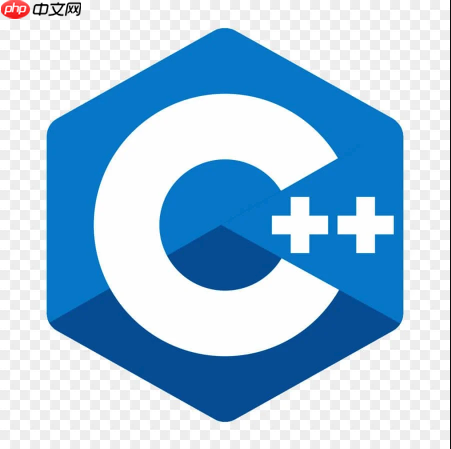定义统一异常类AppException并结合宏throw_APP_EXCEPTION,在模块边界捕获底层异常并转换为统一类型,最后在main函数中通过顶层try-catch捕获AppException进行集中错误处理,提升系统稳定性与可维护性。

在c++项目中,异常处理的统一性和可维护性对系统稳定性至关重要。直接使用标准异常或裸 throw 很容易导致代码分散、错误信息不一致。通过封装异常并提供统一处理接口,可以显著提升代码的健壮性和可读性。
定义统一异常类
创建一个自定义异常类,继承自 std::exception,用于封装错误码、错误消息和上下文信息。
例如:
class AppException : public std::exception { private: int m_errorCode; std::String m_message; std::string m_file; int m_line; <p>public: AppException(int code, const std::string& msg, const std::string& file, int line) : m_errorCode(code), m_message(msg), m_file(file), m_line(line) {}</p><pre class='brush:php;toolbar:false;'>const char* what() const noexcept override { std::ostringstream oss; oss << "[" << m_file << ":" << m_line << "] " << "Error " << m_errorCode << ": " << m_message; m_what = oss.str(); return m_what.c_str(); } int errorCode() const { return m_errorCode; } std::string file() const { return m_file; } int line() const { return m_line; }
private: mutable std::string m_what; };
使用宏简化抛出异常:
立即学习“C++免费学习笔记(深入)”;
#define THROW_APP_EXCEPTION(code, msg) throw AppException(code, msg, __FILE__, __LINE__)
建立异常处理中间层
在关键函数入口或模块边界设置异常捕获和转换机制,将底层异常转化为统一异常类型。
例如,在服务层封装中:
std::string UserService::getUser(int id) { try { return database.query("SELECT name FROM users WHERE id = " + std::to_string(id)); } catch (const std::out_of_range& e) { THROW_APP_EXCEPTION(1001, "Invalid user ID provided"); } catch (const std::runtime_error& e) { THROW_APP_EXCEPTION(2001, "Database Access failed: " + std::string(e.what())); } catch (...) { THROW_APP_EXCEPTION(9999, "Unknown error occurred"); } }
全局异常处理器
在程序主流程中设置顶层异常捕获,确保未处理异常也能被记录和响应。
main 函数示例:
int main() { try { app.run(); } catch (const AppException& e) { std::cerr << "Application Error: " << e.what() << std::endl; // 可集成日志系统 Logger::error(e.what()); return e.errorCode(); } catch (const std::exception& e) { std::cerr << "Standard Exception: " << e.what() << std::endl; Logger::error("Standard exception: " + std::string(e.what())); return -1; } catch (...) { std::cerr << "Unknown exception caught" << std::endl; Logger::error("Unknown exception"); return -99; } return 0; }
异常日志与调试支持
在异常类中加入时间戳、调用栈(可选)等信息,便于问题追踪。
建议在 what() 中包含:
可通过工具函数生成堆栈跟踪(linux下使用 backtrace + backtrace_symbols)。
基本上就这些。封装异常不是为了增加复杂度,而是让错误处理更集中、信息更完整。定义好错误码体系,配合日志,能大幅降低后期维护成本。不复杂但容易忽略。
© 版权声明
文章版权归作者所有,未经允许请勿转载。
THE END

















